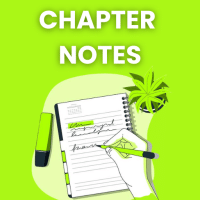Humanities/Arts Exam > Humanities/Arts Questions > The most common tidal pattern, featuring two ...
Start Learning for Free
The most common tidal pattern, featuring two high tides and two low tides each day is called
- a)Neap tide.
- b)Mixed tide.
- c)Semi-diurnal tide
- d)Diurnal tide
Correct answer is option 'C'. Can you explain this answer?
Verified Answer
The most common tidal pattern, featuring two high tides and two low ti...
The most common tidal pattern, featuring two high tides and two low tides each day is called Semi-diurnal tide.
Most Upvoted Answer
The most common tidal pattern, featuring two high tides and two low ti...
The correct answer is c) Semi-diurnal tide.
Semi-Diurnal Tide:
A semi-diurnal tide is the most common tidal pattern observed in many coastal areas around the world. It is characterized by two high tides and two low tides each day, with approximately equal heights. The term "semi" means half, and "diurnal" refers to a 24-hour period, indicating that the tidal cycle repeats every 12 hours and 25 minutes.
Factors Influencing Tides:
Tides are primarily influenced by the gravitational forces exerted by the moon and the sun on the Earth's oceans. The moon's gravitational pull is the dominant force responsible for the tides, as it is closer to the Earth compared to the sun. However, the sun also contributes to the tides, albeit to a lesser extent.
Moon's Influence:
The moon's gravitational pull causes a bulge of water on the side of the Earth facing the moon, creating a high tide. Simultaneously, a second high tide occurs on the opposite side of the Earth due to the centrifugal force generated by the Earth-moon system's rotation. These two high tides are known as lunar high tides.
Sun's Influence:
The sun's gravitational pull also affects the tides, but to a lesser degree. When the sun, moon, and Earth are aligned, during a full or new moon, their gravitational forces combine, resulting in higher high tides and lower low tides. These are called spring tides.
Tidal Patterns:
The tidal patterns observed in different regions are influenced by various factors such as the shape of the coastline, the depth of the ocean, and the resonance of the basin. As a result, different regions experience different tidal patterns.
Other Tidal Patterns:
a) Neap tides occur when the gravitational forces of the sun and moon are perpendicular to each other, resulting in lower high tides and higher low tides. This happens during the first and third quarter moon phases.
b) Mixed tides refer to tidal patterns that exhibit characteristics of both diurnal (one high tide and one low tide each day) and semi-diurnal tides. Mixed tides are observed in some coastal areas where the tidal range varies significantly throughout the month.
Conclusion:
In conclusion, the most common tidal pattern, characterized by two high tides and two low tides each day, is known as a semi-diurnal tide. This pattern is primarily influenced by the gravitational forces of the moon and, to a lesser extent, the sun. Understanding tidal patterns is important for coastal communities as it impacts activities such as fishing, shipping, and coastal erosion.
Semi-Diurnal Tide:
A semi-diurnal tide is the most common tidal pattern observed in many coastal areas around the world. It is characterized by two high tides and two low tides each day, with approximately equal heights. The term "semi" means half, and "diurnal" refers to a 24-hour period, indicating that the tidal cycle repeats every 12 hours and 25 minutes.
Factors Influencing Tides:
Tides are primarily influenced by the gravitational forces exerted by the moon and the sun on the Earth's oceans. The moon's gravitational pull is the dominant force responsible for the tides, as it is closer to the Earth compared to the sun. However, the sun also contributes to the tides, albeit to a lesser extent.
Moon's Influence:
The moon's gravitational pull causes a bulge of water on the side of the Earth facing the moon, creating a high tide. Simultaneously, a second high tide occurs on the opposite side of the Earth due to the centrifugal force generated by the Earth-moon system's rotation. These two high tides are known as lunar high tides.
Sun's Influence:
The sun's gravitational pull also affects the tides, but to a lesser degree. When the sun, moon, and Earth are aligned, during a full or new moon, their gravitational forces combine, resulting in higher high tides and lower low tides. These are called spring tides.
Tidal Patterns:
The tidal patterns observed in different regions are influenced by various factors such as the shape of the coastline, the depth of the ocean, and the resonance of the basin. As a result, different regions experience different tidal patterns.
Other Tidal Patterns:
a) Neap tides occur when the gravitational forces of the sun and moon are perpendicular to each other, resulting in lower high tides and higher low tides. This happens during the first and third quarter moon phases.
b) Mixed tides refer to tidal patterns that exhibit characteristics of both diurnal (one high tide and one low tide each day) and semi-diurnal tides. Mixed tides are observed in some coastal areas where the tidal range varies significantly throughout the month.
Conclusion:
In conclusion, the most common tidal pattern, characterized by two high tides and two low tides each day, is known as a semi-diurnal tide. This pattern is primarily influenced by the gravitational forces of the moon and, to a lesser extent, the sun. Understanding tidal patterns is important for coastal communities as it impacts activities such as fishing, shipping, and coastal erosion.

|
Explore Courses for Humanities/Arts exam
|

|
Question Description
The most common tidal pattern, featuring two high tides and two low tides each day is calleda)Neap tide.b)Mixed tide.c)Semi-diurnal tided)Diurnal tideCorrect answer is option 'C'. Can you explain this answer? for Humanities/Arts 2025 is part of Humanities/Arts preparation. The Question and answers have been prepared according to the Humanities/Arts exam syllabus. Information about The most common tidal pattern, featuring two high tides and two low tides each day is calleda)Neap tide.b)Mixed tide.c)Semi-diurnal tided)Diurnal tideCorrect answer is option 'C'. Can you explain this answer? covers all topics & solutions for Humanities/Arts 2025 Exam. Find important definitions, questions, meanings, examples, exercises and tests below for The most common tidal pattern, featuring two high tides and two low tides each day is calleda)Neap tide.b)Mixed tide.c)Semi-diurnal tided)Diurnal tideCorrect answer is option 'C'. Can you explain this answer?.
The most common tidal pattern, featuring two high tides and two low tides each day is calleda)Neap tide.b)Mixed tide.c)Semi-diurnal tided)Diurnal tideCorrect answer is option 'C'. Can you explain this answer? for Humanities/Arts 2025 is part of Humanities/Arts preparation. The Question and answers have been prepared according to the Humanities/Arts exam syllabus. Information about The most common tidal pattern, featuring two high tides and two low tides each day is calleda)Neap tide.b)Mixed tide.c)Semi-diurnal tided)Diurnal tideCorrect answer is option 'C'. Can you explain this answer? covers all topics & solutions for Humanities/Arts 2025 Exam. Find important definitions, questions, meanings, examples, exercises and tests below for The most common tidal pattern, featuring two high tides and two low tides each day is calleda)Neap tide.b)Mixed tide.c)Semi-diurnal tided)Diurnal tideCorrect answer is option 'C'. Can you explain this answer?.
Solutions for The most common tidal pattern, featuring two high tides and two low tides each day is calleda)Neap tide.b)Mixed tide.c)Semi-diurnal tided)Diurnal tideCorrect answer is option 'C'. Can you explain this answer? in English & in Hindi are available as part of our courses for Humanities/Arts.
Download more important topics, notes, lectures and mock test series for Humanities/Arts Exam by signing up for free.
Here you can find the meaning of The most common tidal pattern, featuring two high tides and two low tides each day is calleda)Neap tide.b)Mixed tide.c)Semi-diurnal tided)Diurnal tideCorrect answer is option 'C'. Can you explain this answer? defined & explained in the simplest way possible. Besides giving the explanation of
The most common tidal pattern, featuring two high tides and two low tides each day is calleda)Neap tide.b)Mixed tide.c)Semi-diurnal tided)Diurnal tideCorrect answer is option 'C'. Can you explain this answer?, a detailed solution for The most common tidal pattern, featuring two high tides and two low tides each day is calleda)Neap tide.b)Mixed tide.c)Semi-diurnal tided)Diurnal tideCorrect answer is option 'C'. Can you explain this answer? has been provided alongside types of The most common tidal pattern, featuring two high tides and two low tides each day is calleda)Neap tide.b)Mixed tide.c)Semi-diurnal tided)Diurnal tideCorrect answer is option 'C'. Can you explain this answer? theory, EduRev gives you an
ample number of questions to practice The most common tidal pattern, featuring two high tides and two low tides each day is calleda)Neap tide.b)Mixed tide.c)Semi-diurnal tided)Diurnal tideCorrect answer is option 'C'. Can you explain this answer? tests, examples and also practice Humanities/Arts tests.

|
Explore Courses for Humanities/Arts exam
|

|
Signup for Free!
Signup to see your scores go up within 7 days! Learn & Practice with 1000+ FREE Notes, Videos & Tests.


















